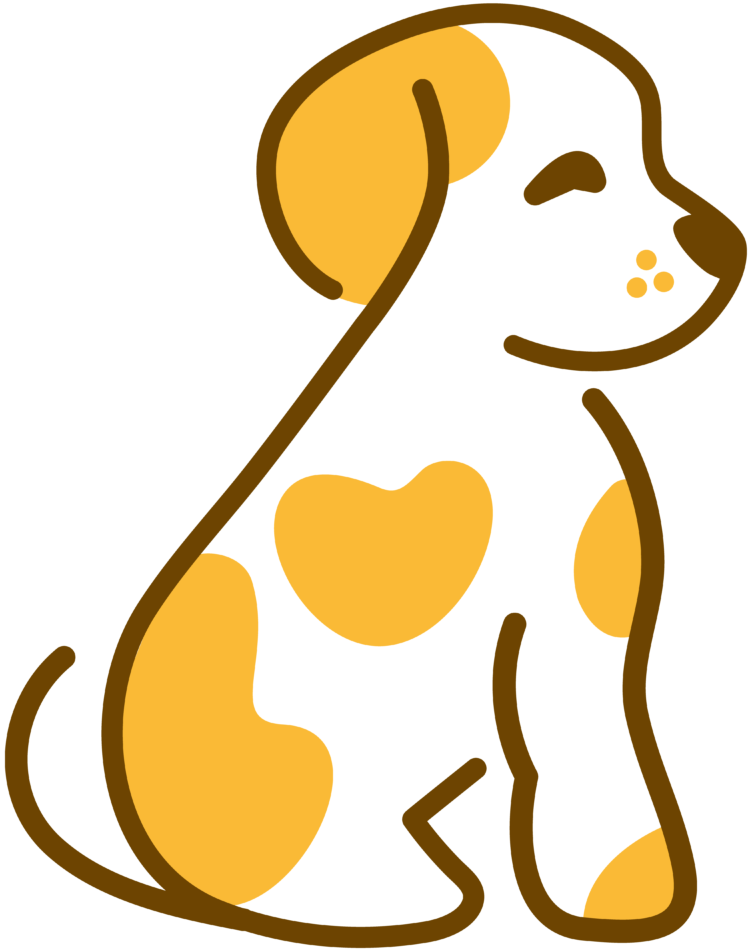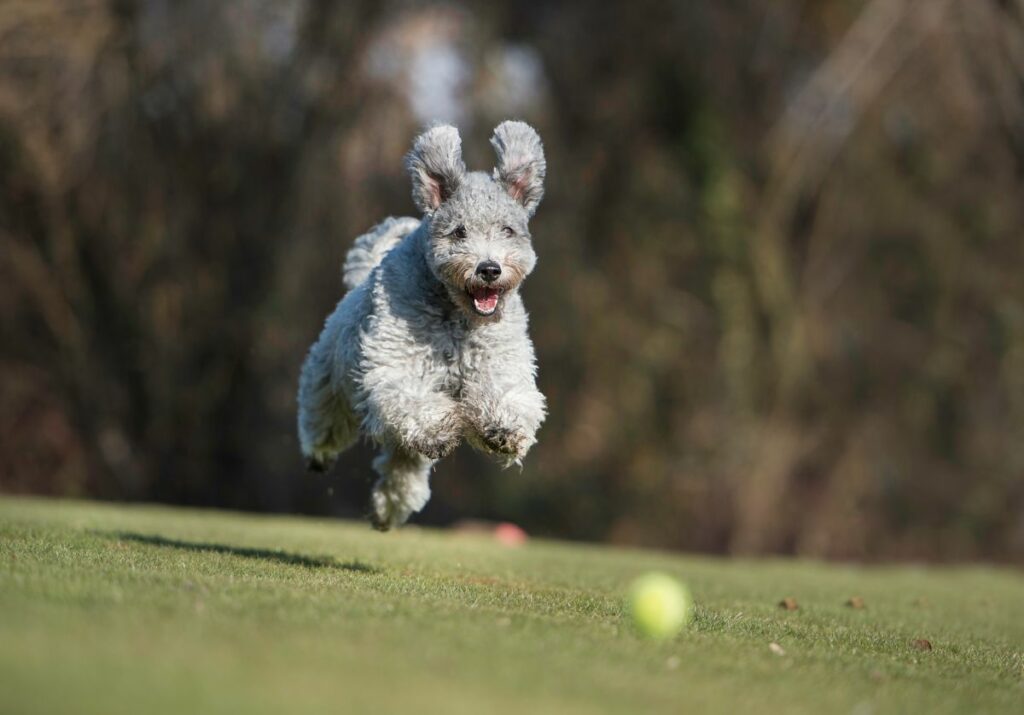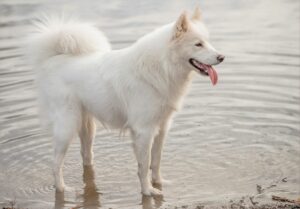Originally, the Pumi is a Hungarian shepherd, created by breeding Puli’s with German and French shepherd dogs. Because this dog is used to moving around a lot and doing tasks for you, it is a dog that fits perfectly in an active family. Because with children and other pets he is good to deal with. Have you become curious about this energetic and inquisitive medium-sized dog? Then read on and decide whether this dog suits you.
Not a Puli but a Pumi: a breed that herds cattle
The origin of the Pumi lies in Hungary. The breed probably originated by accident, by breeding the Hungarian Puli with German and French sheepdogs. For a long time, people mistook the Pumi for the Puli. It was not until 1920 that the Hungarian professor Dr. Emil Raitsits was believed to have separated the Pumi from the Puli. He encouraged the breeding of this breed so that traits could be defined.
The Pumi was used to herd livestock. The breed was created in the need to create a dog that herds as well as possible. This made the breed very fast, agile, and able to make quick decisions. They could herd the cattle without causing injury to the cattle. Today in Hungary they still use this dog breed for herding cattle. Outside Hungary, this dog is gaining popularity as a companion dog.
A cheerful dog that is easily gets along with people and animals
The Pumi has a nice character. He is cheerful, curious, attentive, and interested in everything around him. He is incredibly perceptive, making some owners of this breed feel that their dog can read minds. Some Pumi’s love to cuddle, others prefer to lie by your feet. This dog breed fits well in a family with children. However, the dog often gravitates towards a particular person with whom it prefers to spend its time.
The Pumi also does well in a household with other pets. He usually recognizes when the animals are not dogs and ignores cats if they are not friendly to him. Still, you should be careful when you have a cat. Pumis are also good at getting along with other dogs, if the other dog doesn’t force himself on them. Do you have small pets like guinea pigs or hamsters? Because this dog breed also does hunt small rodents, it is not wise to keep them together under one roof.
Pumis are inquisitive dogs that like to work hard for you. You do need to be careful that your training is not too monotonous and repetitive. Otherwise, he will lose his attention. Reward your dog especially when he does well. He responds less well to negative treatment, both verbal and physical.
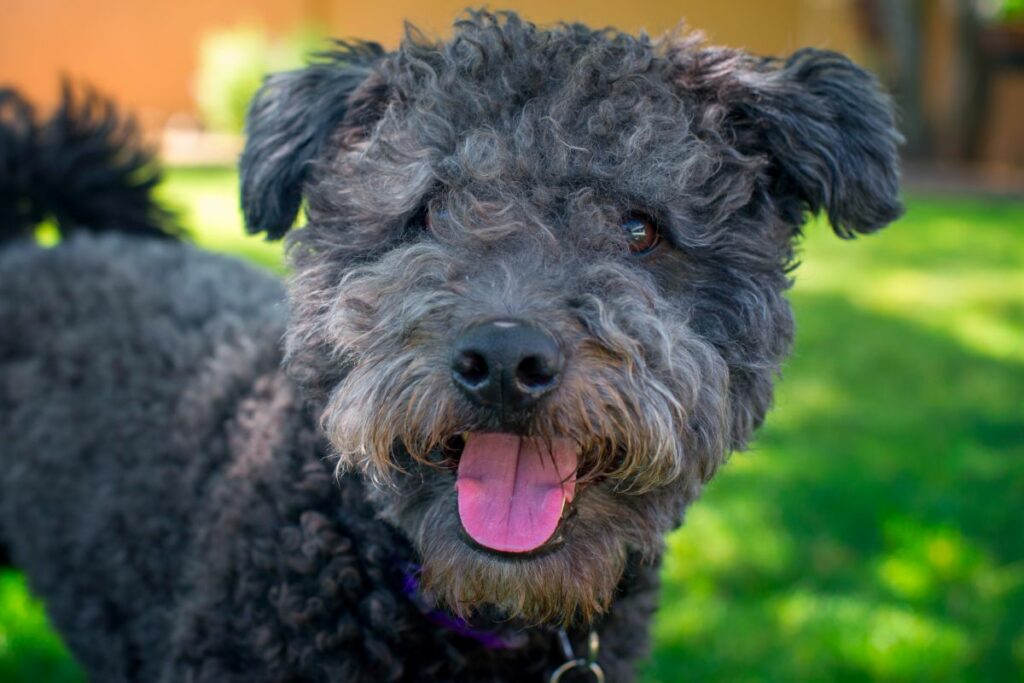
The Pumi looks like a teddy bear
You recognize the Pumi immediately by his teddy bear look and alert facial expression. His build is square and muscular. He has medium length, wavy and curly coats. Parts of his coat are short and rough, while other parts are long and tousled. His coat comes in different colors, such as gray, black, light brown with a black mask, cream with dark mask or rare white.
His muzzle is elongated, and he has semi-erect ears. These ears are set high on his head, this is the distinguishing feature of this breed. The Pumi’s tail is medium length and curls over its lower back. It is a medium-sized dog with a height at the withers between 38 and 47 centimeters. Its weight varies between 8 and 15 pounds.
The Pumi requires an average care of its coat
When you take a Pumi into your home, you should count on some care. He does not lose his own fur, as is the case with Poodles. Therefore, you should brush him regularly and well to brush out potential tangles. Some Pumis also require you to trim their coat from time to time. You could do this yourself – if you learned this from the professional – or have it done for you. Also keep an eye on his eyes, ears, nails, and teeth and take care of these parts. Just as you would with any other dog.
The health problems of the Pumi: four conditions that are known to exist
Pumi dogs are generally reasonably healthy and hardy. But there are several diseases they can get, such as:
- Patella Luxation
- Hip dysplasia
- Primary lens luxation
- Degenerative myelopathy
Patella Luxation is a congenital condition. In it, the patella groove is too shallow. The patella groove holds the kneecap in place, allowing it to move up and down when the dog bends or extends its knee joint. Because the kneecap no longer stays in place, it can slide up the thighbone. This causes the kneecap to permanently displace, thereby impeding the dog’s movement. If your dog has this, he is also more prone to developing early arthritis.
In Hip dysplasia, the hip joint is abnormally shaped. As a result, the head of the femur no longer fits completely into the socket. This causes the femur to jump in and out of the hip joint. This causes damage to the hip joint and the surrounding bones of your dog. Lameness can occur and now there is a chance of getting early arthritis.
Primary lens luxation is an inherent condition. It causes the fibers that attach the lens in your dog’s eye to deteriorate. This causes the lens to shift. This can lead to glaucoma and rapid onset blindness in your Pumi.
Finally, Degenerative myelopathy. This is degeneration of the spinal cord. This causes paralysis of the Pumi’s hind legs. This usually occurs in older dogs, although younger dogs can also suffer from it. As time passes, the condition is more serious. This is because it can eventually spread to the upper parts of the spinal cord, which is fatal. In all, a Pumi can reach the age of 12 to 13 years.
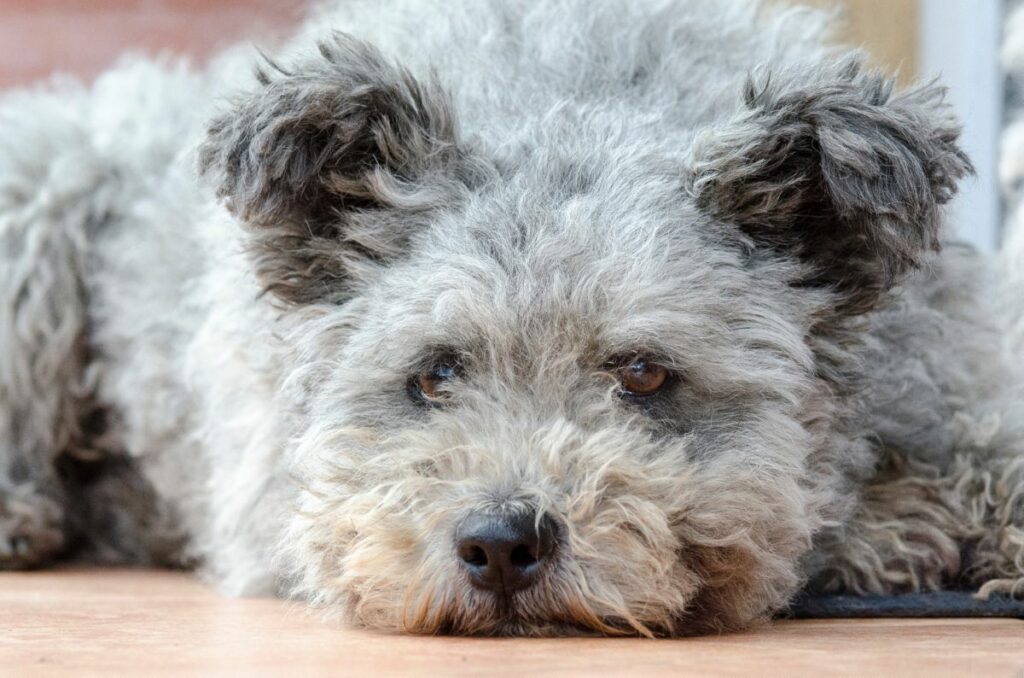
Training the verbal Pumi
Training a Pumi can be challenging, although they are trainable dogs. This is because you need to make sure that the training sessions remain interesting enough for your dog. Do you do the same training too often? Then the Pumi will soon get bored.
Because they are quick to bark to communicate with you, training your dog to stay quiet is also tough. But if you don’t, he will soon bark all over the neighborhood. So, pay enough attention and time to train your Pumi properly.
This is what you pay for a puppy
If you want to buy a Pumi, you should expect to spend between $500 and $1200. for a puppy. Of course, the price varies from breeder to breeder. You can also check if there is a Pumi in the shelter or ask through the breeder if there is a dog for redeployment. You will then get a Pumi that has been in one (or more) families. This requires some extra attention, because your dog needs to build a bond with a new family and gain confidence.
A dog to move around with
The Pumi has a lot of energy. Besides that, you can keep this breed happy by letting it exercise and work. Not surprising, with his background as a herdsman of cattle. So, he likes to run, and you must be in for a reasonable amount of exercise per day. Also be sure to put him to work with obedience training, agility, and herding. You will make this athletic dog happy with that.
Recognition of the Pumi in Hungary and America
In America, the breed was recognized by the American Kennel Club. It is the 190th breed recognized by the AKC. Did you know that there is also a Hungarian Pumi Club in America? There is one, ‘The Hungarian Pumi Club of America, Inc’. This club was formed in 2005 and can be visited here.
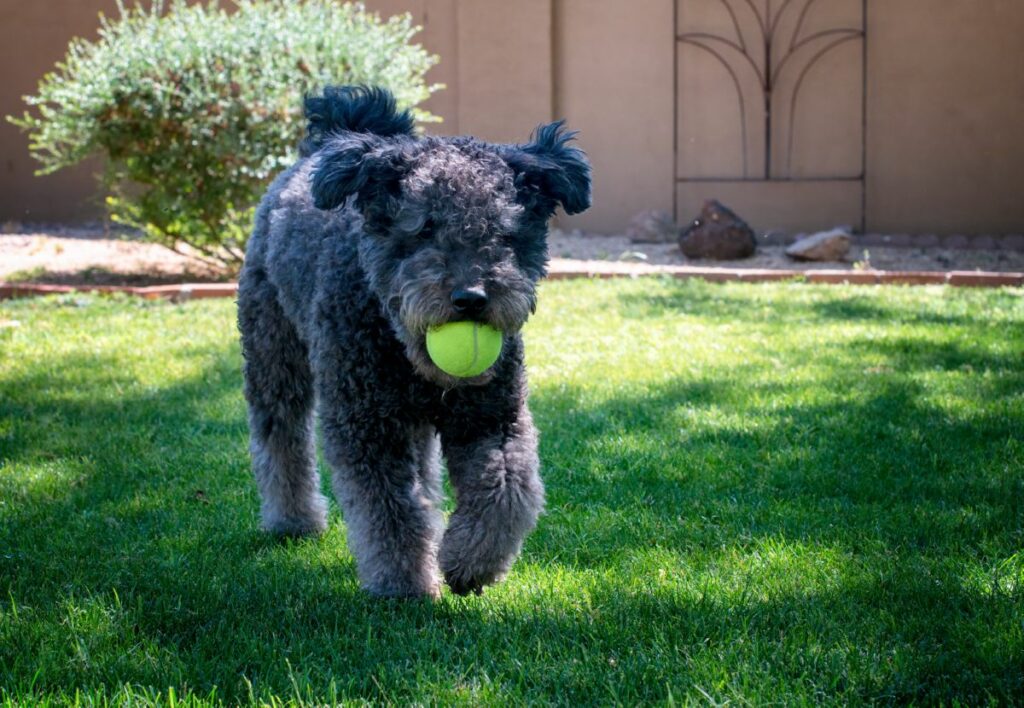
An excellent companion animal for active people
Pumis are therefore excellent companion animals when you like to be active. Because these dogs can be vocal, it is smart to train him well. You have to be creative, because if you repeat the same training too often, your dog will soon get bored.
Because Pumis also go well with most pets, it is not a problem if you already have a cat or dog. So, do you want a dog that looks like a teddy bear, and do you love lots of outdoor walking and exercise? Then the Pumi is a suitable dog for you.
